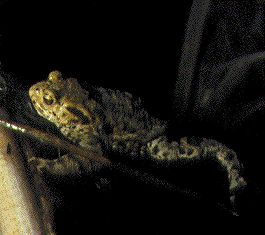Molecular and Mendelian Genetics - Is there non-coding DNA?

Types of repetitive DNA
As we have seen, geneticists have shown that a high proportion of DNA in many organisms is repetitive and probably non-coding. For instance, only one fifth of the genome of the toad Bufo bufo, pictured opposite, is single copy DNA.
Geneticists distinguish a number of kinds of repetitive DNA. An important distinction is between tandem and scattered repeats:
Tandem DNA
• Microsatellites. Repeats of short (2 - 5 base pair) nucleotide sequences. The number of repeats varies but the average is approximately 100 repeats. Many microsatellite loci are scattered through the genome; an average human, for example, contains about 30 000 microsatellite loci.
• Minisatellites. Repeats of longer (approximately 15 base pair) nucleotide sequences. The number of repeats varies among minisatellite loci, and there are many loci scattered through the genome. The average length of any one locus is usually about five to two thousand nucleotides.
• Satellite DNA. The size of the repeated unit varies in different cases; some are as small (5 - 15 base pairs) as micro- and minisatellites, others are larger (about 100 base pair). They are often found in big blocks, of about 1000 or more repeats of the unit sequence in regions of the chromosome near the centromere or the telomere.
Scattered repeats
Longer sequences (often approximately 100 base pairs) that are distributed throughout the genome, usually in single copies bounded by other sequences rather than in tandem repeats.
| Next |



